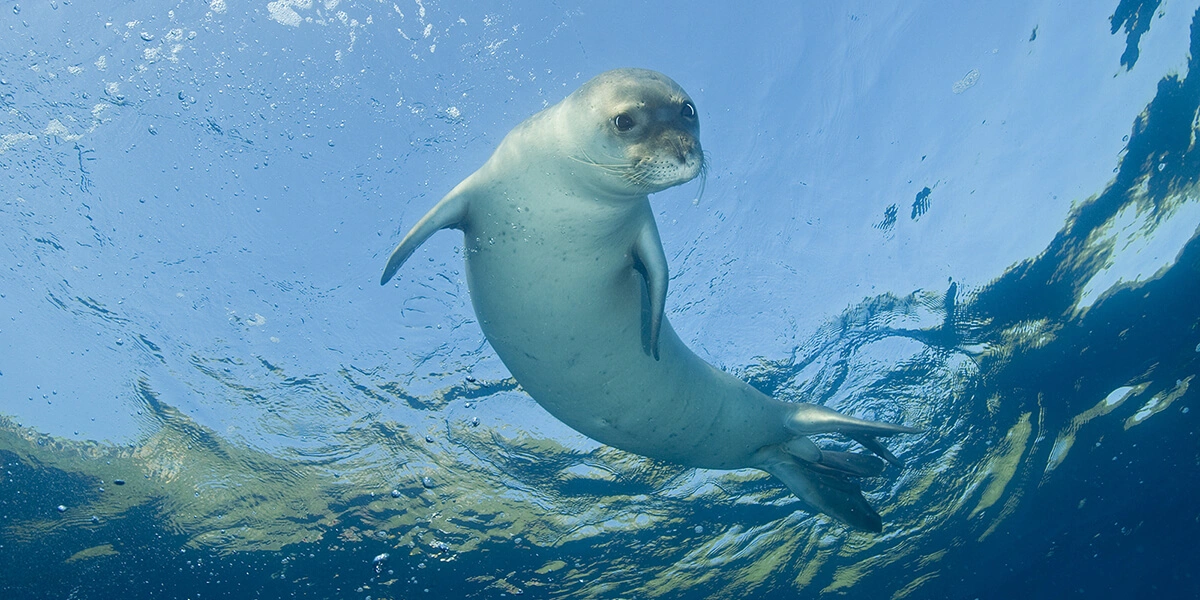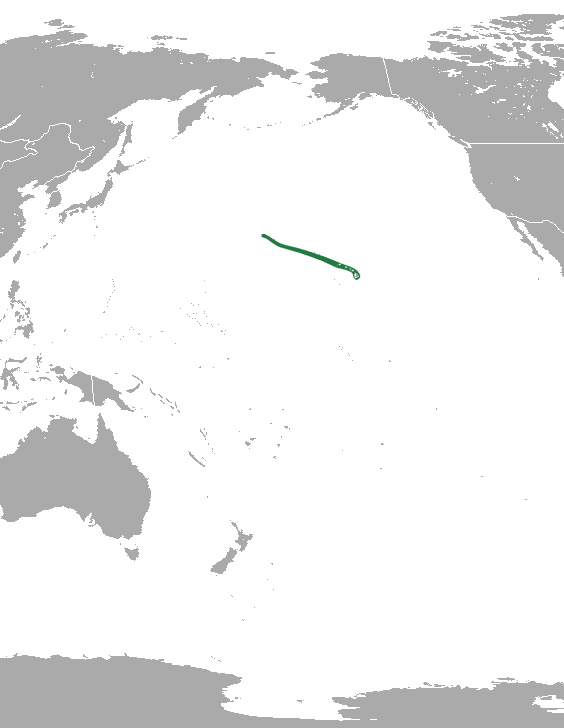Physical Address
304 North Cardinal St.
Dorchester Center, MA 02124

The Hawaiian monk seal (Neomonachus schauinslandi) is one of the rarest marine mammals in the world, found exclusively in the Hawaiian Archipelago.
“Hawaiian monk seal range”

With fewer than 1,400 individuals remaining, these seals are critically endangered. This article explores the unique traits of the Hawaiian monk seal, the threats they face, and the ongoing conservation efforts aimed at ensuring their survival.
The Hawaiian monk seal, also known locally as ‘īlioholoikauaua, which means “dog that runs in rough water,” is distinguished by its sleek, streamlined body and short, broad flippers. Adult seals can grow up to 7.5 feet in length and weigh between 375 to 450 pounds. Their fur varies from dark gray to brown, with lighter undersides. Newborn pups are jet black and gradually lighten as they mature.(Resting on sands at Midway Atoll National Wildlife Refuge)
These seals are primarily solitary, although they sometimes form small groups. They prefer to haul out on sandy beaches to rest, molt, and nurse their pups. The species is known for its long whiskers, which are highly sensitive and help them detect prey in the dimly lit waters of their habitat.
Hawaiian monk seals are apex predators, playing a crucial role in maintaining the balance of their marine ecosystem. They feed on a variety of prey, including fish, squid, octopus, and crustaceans. By controlling the populations of these species, monk seals help ensure the health and diversity of the coral reef ecosystems they inhabit.
Their foraging activities also contribute to the overall health of the reef by promoting nutrient cycling and preventing the overgrowth of certain species that can be harmful to the coral. The presence of monk seals is a positive indicator of a healthy marine environment.
The Hawaiian monk seal faces numerous threats, including entanglement in marine debris, predation by sharks, disease, and habitat degradation. Human activities, such as coastal development and tourism, also pose significant risks. Additionally, climate change is impacting their habitat, particularly in the Northwestern Hawaiian Islands, where rising sea levels and storm surges threaten the sandy beaches they rely on for resting and pupping.
Conservation efforts are being led by the National Oceanic and Atmospheric Administration (NOAA), along with various local and international organizations. These efforts include habitat protection, marine debris removal, and public education programs to raise awareness about the species. The Hawaiian Monk Seal Recovery Plan, implemented by NOAA, focuses on mitigating human-seal interactions, enhancing habitat protection, and conducting research to inform conservation strategies.
Extensive research has been conducted on Hawaiian monk seals to better understand their behavior, genetics, and health. Satellite tracking has revealed crucial information about their movement patterns, foraging behavior, and habitat use. Genetic studies are helping to maintain and potentially increase the genetic diversity of the population, which is vital for their long-term survival.
| Kingdom | Animalia |
| Phylum | Chordata |
| Class | Mammalia |
| Order | Carnivora |
| Family | Phocidae |
| Genus | Neomonachus |
| Species | schauinslandi |
Health assessments are regularly conducted to monitor the seals for diseases and parasites, with efforts to rehabilitate and release injured or sick individuals back into the wild. These scientific insights are essential for developing effective conservation strategies and ensuring the species’ survival.
The Hawaiian monk seal holds significant cultural value for Native Hawaiian communities. Historically, these seals were featured in Hawaiian mythology and regarded as aumakua (ancestral guardians). Efforts to conserve monk seals often involve collaborating with Native Hawaiian organizations to integrate traditional knowledge and cultural practices into modern conservation strategies.
Community-based conservation programs are crucial in fostering a sense of stewardship among local residents and visitors. Educational initiatives aim to reduce human-seal conflicts, promote respectful wildlife viewing practices, and engage the public in conservation activities.
[Virtual Tour of Monk Seal Habitats]
The Hawaiian monk seal is not only a vital part of Hawaii’s marine ecosystem but also a symbol of the natural beauty and cultural heritage of the Hawaiian Islands. Their unique characteristics, ecological importance, and the urgent need for their conservation make them a critical focus for marine biologists and conservationists. By understanding and appreciating Hawaiian monk seals, we can better recognize the importance of preserving these ancient and endangered species.
The fight to save Hawaiian monk seals is a race against time, highlighting the need for immediate and sustained conservation efforts. Through collective action and global awareness, there is hope that we can secure a future for these guardians of Hawaii’s pristine shores and preserve the biodiversity of our oceans.